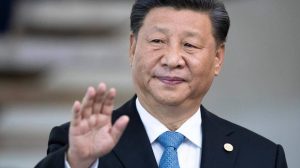India extended the zero-tariff on lentils until 31 March 2024. This announcement is unrelated to the improved access for Australian lentils to India under the Australia-India Economic Cooperation and Trade Agreement.
This rate applies to all countries except the United States.
Lentils from the United States, however, will be subject to a 22% tariff.
The objective of the extension is to contain the retail price of lentils in India by reducing the cost of imports.
Implications for exporters
Australian lentil exports to India will continue to benefit from a zero tariff until at least 31 March 2024.
Exporters are encouraged to track the availability and retail prices of split pigeon peas (toor dal). Lentils can be used as a substitute when toor dal prices are too high.
Exporters should monitor Indian lentil plantings from October onwards. This applies in particular to plantings in Madhya Pradesh and Uttar Pradesh. Plantings will provide an indication of the likely volume of domestic production in early 2023.
Figure 1: World lentil imports by country

Trade impact of Indian lentil tariffs
India is one of the world’s largest consumers and importers of lentils (Figure 1). The Indian Government adjusts lentil tariffs depending on the availability of lentils that are grown domestically.
Tariff rates have a substantial impact on the amount of lentils imported by India. For example, Australian lentil exports to India fell dramatically (Figure 2) following the introduction of a 30% tariff on lentils in December 2017.
The impact of the tariff change was exacerbated by dry conditions in Australia, which reduced the volume of Australian lentils available for export.
In 2021–22, the return of good seasonal conditions in Australia and reduced Indian tariffs led to a resurgence in trade. Australian exports of lentils to India increased by 253% compared to the average for the previous 3 years.
Australian pulse production is expected to be strong in 2022–23. This will likely lead to more opportunities for exports to India.
Figure 2: Australian lentil exports by country (2016-17 to 2021-22)

Tariff reductions part of global food security concerns
Lentils and other pulses are a major source of nutrition in developing countries including India (OECD 2021). Despite rising meat consumption, most protein in India comes from crops, in particular pulses.
Concerns about food prices and availability have led many countries to reduce or remove import restrictions on food. By removing import tariffs, the Indian Government is hoping to reduce food inflation. It also hopes to avoid a repeat of the record high lentil prices experienced in September 2021.
The outlook for Indian lentil prices will largely depend on lentil production in Canada and India.
- Canada is India’s main source of lentil imports (Figure 3). In 2021–22, drought caused Canadian lentil production to fall by 44%.
- Despite dry conditions in the key lentil production region of Saskatchewan, the Canadian Government expects lentil production and exports to recover in 2022–23.
- The Indian Government is expecting an average lentil crop of 28 million tonnes in 2021–22.
- The outlook for the Indian lentil crop will become clearer once planting begins from October onwards.
Given the above, the demand for Australian lentils in India – as well as prices in India – will largely depend on whether the lentil harvests in Canada and India return to average levels in 2022–23.
Figure 3: Indian lentil imports by country (2017 to 2021)





















